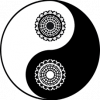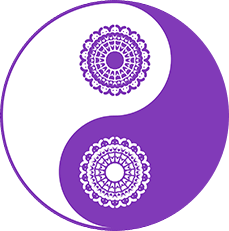


There are 2 main types of meditation, Guided and Unguided. Both have unique benefits and advantages. Typically, it is considered that if you are new to meditating a guided meditation will help you with a specific topic you have in mind or perhaps an issue you are experiencing and wish to work through. Unguided meditations are a more personal type of meditation and can be done anywhere and at anytime. There’s no set pattern or time frame so you can easily adjust according to your situation.

In guided meditation, a teacher guides you through the basic steps of the practice, either in person or via a meditation app or video. This type of meditation is particularly useful for beginners because the teacher is experienced and trusted, and their guidance can be key to helping those who are new to the practice get the most out of the experience. Most guided meditations follow a similar format: the teacher explains how the mind behaves during meditation, leads you through a particular meditation technique, and then suggests how to integrate this technique into your everyday life.

This type of meditation can also be called silent meditation. Using this method you meditate alone, without someone else explaining the process. For some people, unguided meditation involves simply sitting in quiet and paying attention to the body and thoughts for a set period of time. For others, it involves using some of the techniques they’ve learned from previous guided practices
There are literally hundreds of meditation techniques encompassing practices from different traditions, cultures, spiritual disciplines, and religions. There’s not a universally accepted “best” or “most effective” type; rather, it is our individual preference that helps us choose the one (or ones) that works best for us.

Awareness of what you're sensing and feeling in the moment, without interpretation or judgement

Focusing your attention on an object, sound, or sensation rather than trying to achieve a clear mind without a specific focal point.

Intentionally connecting to something that is greater, vaster, and deeper than the individual self.

Quieting and focusing the mind using a sound, word or phrase recited either aloud or silently.
In the world of spirituality and all things metaphysical, there are many translations, definitions and explanations for same or similar things. Sometimes it’s difficult to truly articulate the true meanings as we all perceive and translate differently according to our experiences, thus resulting in varying descriptions, names and topics to sift and sort through. Ultimately, our task is to seek our own truth and what resonates with us to discover what we truly believe or don’t align with. And as you spiritually evolve, revisit them and you’ll find that it has changed, just as you also have. All in all, do your own research and mostly just “Google it” to start seeking more in depth about these topics.
Breathwork refers to different breathing techniques, programs, and exercises. All of these exercises focus on your conscious awareness of your inhales and exhales. These exercises use deep, focused breathing that lasts a specific amount of time. – Healthline
Guided meditation is a state of relaxed concentration invoked and led by another party. Guided meditation can be as short as a few minutes or as long as several hours. Either way, the purpose is to achieve mental, emotional and physical healing and stress relief. – Gaiam.com
Loving-kindness meditation is a form of meditation that focuses on cultivating feelings of goodwill, kindness and compassion. It originates in the Buddhist tradition, but has achieved more widespread popularity due to its reputed benefits, and the fact it can be practiced by anyone, regardless of their religion or belief system. – Yogapedia
Chakra meditation is a form of meditation that consists of a set of relaxation techniques focused on bringing balance, relaxation and well-being to the chakras. “Chakra” is an ancient Sanskrit word that means vortex or wheel that can be traced back to India.
Chakras are the human body’s seven main energy centers with each one corresponding to individual glands that govern our specific body parts plus various areas of the psyche. They are located next to a hormonal gland along the human spinal column. –Chakras.info
Yoga is a holistic and mindful practice that includes physical movements (asana), breathing (pranayama), meditation (dhyana) and relaxation (savasana). The practice cultivates mind-body awareness, promotes physical movement, and creates intimacy with one’s internal landscape (e.g., emotions, thoughts, physical sensations). Yoga can also be self-soothing, affecting the stress response system by quieting down the nervous system. Through its impact on the stress response system, yoga can help to decrease physiological arousal, for example lowering blood pressure and heart rate, a benefit for those who tend to feel wound up, on edge, and restless. – Power Yoga.com
Mindfulness meditation is a mental training practice that teaches you to slow down racing thoughts, let go of negativity, and calm both your mind and body. It combines meditation with the practice of mindfulness, which can be defined as a mental state that involves being fully focused on “the now” so you can acknowledge and accept your thoughts, feelings, and sensations without judgment. – Very Well Mind
Movement meditation is not your usual meditation where you sit still and focus on your breath. Instead, you are moving through various positions with a mindful and slow pace. You notice various parts of your body that are otherwise ignored such as you hip, elbow, or cheek. You begin to pay attention to the body and how it feels as it moves, bends, and twists. Even your breathing, heartbeat, and other inner sensations will be better noticed when you are mindful of the body. Movement meditation focuses on the movements of the body rather than the goal of the movement. – American Institute of Health Care Professionals
Transcendental Meditation (TM) is a technique for avoiding distracting thoughts and promoting a state of relaxed awareness. – WebMD
Progressive muscle relaxation (PMR) is an anxiety-reduction technique first introduced by American physician Edmund Jacobson in the 1930s.1 The technique involves alternating tension and relaxation in all of the body’s major muscle groups. –Very Well Mind
Mantra chanting can be a great source of calmness, relaxation, and joy. Through mindful attention to the act of chanting or internally reciting a mantra we calm the mind. The sound of the mantra displaces much of the thinking we would otherwise do — thinking that often makes us unhappy. Because we’re generating less internal stress, the body begins to relax. And because there’s an esthetic component to chanting mantras — we can enjoy the sounds we’re producing — mantra chanting can make us happy. – Wildmind Meditation
Vipassana is different from mindfulness meditation, which focuses on awareness, or to transcendental meditation, which uses a mantra. Instead, it dictates a blanket command of non-reaction. No matter the pain as you sit, or the fact that your hands and legs fall asleep and that your brain is crying for release. You are instructed to refocus attention on the objective sensations in your body, arising and falling, as you do a scan of your limbs in a specific order. By doing so, over 10 days, you train yourself to stop reacting to the vicissitudes of life. ~The Guardian.com
Key words and topics to expand your search.